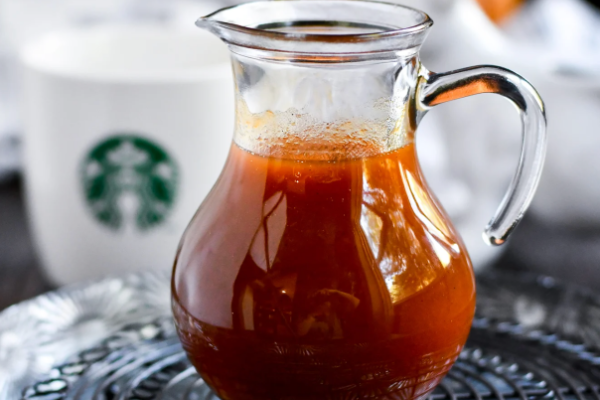Gordon Ramsay’s Perfect Cheese Omelette Recipe
Gordon Ramsay’s Perfect Cheese Omelette Recipe
Gordon Ramsay’s Perfect Cheese Omelette is a masterpiece of simplicity and flavor. It’s a dish that combines the creamy richness of eggs with the melt-in-your-mouth goodness of cheese, creating a delicious harmony of texture and taste.
There’s something magical about a perfectly cooked omelette – it’s a classic breakfast dish that’s versatile, flavorful, and incredibly satisfying. When it comes to mastering the art of omelette-making, one name stands out: Gordon Ramsay.
Known for his culinary prowess and no-nonsense approach, Ramsay has a recipe for a cheese omelette that will leave you craving more.
The Ingredients
Here’s what you’ll need:
- olive oil
- large eggs
- Salt and pepper to taste
- butter
- shredded cheese (cheddar, Gruyère, or your favorite melting cheese)
More Gordon Ramsay Recipes
Tips for Making the Perfect Cheese Omelette
- Low and Slow: The key to a creamy, melt-in-your-mouth omelette is cooking it over low to medium-low heat. Rushing the process over high heat can result in a tough and overcooked exterior.
- Proper Pan: Use a non-stick skillet to ensure that the omelette slides out effortlessly. A 12-inch skillet is an ideal size for a six-egg omelette (but a 10-inch will work in a pinch as well).
- Seasoning: Don’t forget to season your eggs. A pinch of salt and a dash of pepper enhance the flavor of the omelette and the cheese.
- Cheese Choice: While the recipe calls for shredded cheese, feel free to get creative. Experiment with different cheeses like cheddar, Gruyère ,or Swiss. Personally, I love adding Colby Jack when we have it on hand.
- Fold with Care: When folding the omelette, do it gently to preserve the ooey-gooey cheese inside. A flexible spatula is your best friend for this delicate maneuver.
How to Prevent an Omelette from Sticking to the Pan
- Use a Non-Stick Pan: This tip is worth mentioning a second time, since it’s the most efficient way to prevent sticking. These pans have a special coating that makes it harder for food to adhere. Currently, I like using the pan from my Caraway Nonstick Ceramic Cookware Set.
- Preheat the Pan: Ensure your pan is properly preheated before adding any ingredients. This helps create a barrier between the egg mixture and the pan’s surface.
- Use Enough Fat: Add a small amount of fat, such as butter or oil, to the pan before pouring in the egg mixture. The fat helps create a non-stick layer and adds flavor to the omelette.
- Properly Coat the Pan: Tilt the pan to ensure the melted butter or oil spreads evenly, coating the entire bottom and even slightly up the sides. This coating will prevent the eggs from sticking. I like to use a small, silicone pastry brush to spread the oil all over the pan.
- Control the Heat: Cooking the omelette over medium-low heat is essential. High heat can cause the eggs to cook too quickly and stick, while low heat ensures a gentler cooking process.
- Wait for the Right Moment: Allow the bottom of the omelette to set before attempting to flip or fold it. If you try to move the omelette too early, it’s more likely to stick and tear.
How to Avoid Overcooking an Omelette
- Low to Medium-Low Heat: Cooking the omelette over low to medium-low heat allows for even and gentle cooking. High heat can cause the eggs to cook too quickly and become rubbery.
- Watch the Edges: Keep an eye on the edges of the omelette as they start to set. Once the edges are set but the center is still slightly runny, it’s time to fold or flip the omelette.
- Residual Heat: Eggs continue to cook even after you’ve removed them from the heat source. To prevent overcooking, remove the omelette from the pan just before it reaches your desired level of doneness.
- Use a Lid: If you prefer a fully cooked omelette, you can cover the pan with a lid briefly. The trapped heat will help cook the top without the need for high heat. (This is my preferred method)
- Practice Makes Perfect: It may take a few tries to get the timing just right, so don’t be discouraged if your first omelette isn’t perfect. As you gain experience, you’ll become better at gauging when the omelette is done.
- Limit Fillings: Overloading the omelette with too many fillings can increase the cooking time and result in overcooked eggs. Keep the fillings moderate to ensure even cooking.
- Prep Ingredients in Advance: Have your fillings ready to go before you start cooking the eggs. This way, you can quickly assemble the omelette without overcooking the eggs.
Delicious Omelette Variations
Omelettes are incredibly versatile, allowing you to customize them with a wide range of delicious fillings. These omelette variations provide a range of flavors and textures, making them perfect for breakfast, brunch, or even a quick dinner!
Here are the top five omelette variations that we recommend trying:
-
- Western Omelette (Denver Omelette):
- Diced ham
- Sautéed bell peppers (red and green)
- Sautéed onions
- Shredded cheddar cheese (optional)
- Spinach and Feta Omelette:
- Fresh spinach leaves, chopped
- Crumbled feta cheese
- Sautéed onions (optional)
- Chopped fresh herbs (e.g., dill or parsley)
- Mushroom and Swiss Omelette:
- Sliced mushrooms (any variety)
- Shredded Swiss cheese
- Sautéed onions (optional)
- Chopped fresh herbs (e.g., thyme or chives)
- Spanish Omelette (Tortilla Española):
- Eggs
- Potatoes, thinly sliced and parboiled
- Sautéed onions
- Olive oil (for cooking)
- Salt and pepper (to taste)
- Greek Omelette:
- Chopped tomatoes (seeds removed)
- Kalamata olives, pitted and chopped
- Sliced red onions
- Crumbled feta cheese
- Fresh oregano or basil (optional)
These ingredient lists provide the foundation for each omelette variation. Feel free to adjust quantities based on your taste preferences, and don’t forget to season with salt and pepper as needed.
How to Make Gordon Ramsay’s Perfect Cheese Omelette
Gordon Ramsay's Perfect Cheese Omelette
Yield: 1Prep Time: 5 minutesCook Time: 5 minutesTotal Time: 10 minutesGordon Ramsay's Perfect Cheese Omelette is a masterpiece of simplicity and flavor. It's a dish that combines the creamy richness of eggs with the melt-in-your-mouth goodness of cheese, creating a delicious harmony of texture and taste.
Ingredients
- 1 Tbsp olive oil
- 6 eggs
- salt and pepper to taste
- 1/4 cup shredded cheese
- 1 Tbsp butter
Instructions
- Heat pan over low-medium heat.
- Oil pan generously with the olive oil. Make sure the pan is evenly coated.
- Whisk eggs in a medium bowl until well combined, add a pinch of salt and mix again immediately before adding eggs to the prepared pan.
- Pour eggs into the pan and gently whisk with fork (see video) until just the edges edges are mostly set. It will resemble scrambled eggs.
- Add cheese and another pinch of salt.
- Let cheese begin to melt and add butter. If you want a completely solid omelette, cover the pan for a minute to allow the steam to complete the cooking process.
- Remove the lid and tap pan handle vigorously (see video) to loosen the omelette from the pan. Slide a rubber spatula around the edges and gently underneath the eggs to make sure the omelette isn't sticking anywhere.
- Tri-fold the omelette and slide it off the pan onto the serving plate.
Nutrition Information:
Yield: 1 Serving Size: 1
Amount Per Serving: Calories: 765Total Fat: 63gSaturated Fat: 24gTrans Fat: 1gUnsaturated Fat: 34gCholesterol: 1175mgSodium: 998mgCarbohydrates: 3gFiber: 0gSugar: 1gProtein: 44g - Western Omelette (Denver Omelette):

























